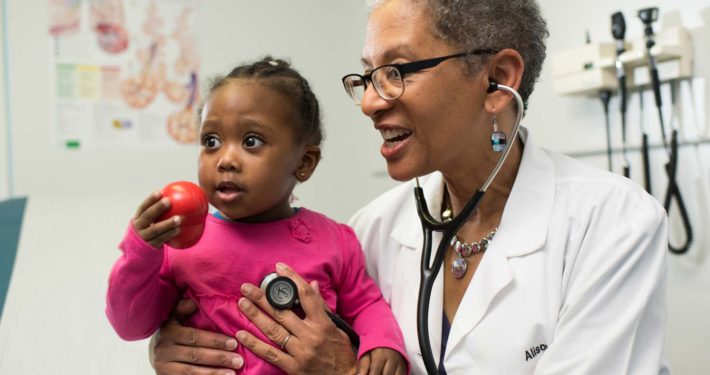Chip Hart coaches and guides pediatricians as they navigate the changing business world of medicine. He combines more than two decades of experience working with busy pediatric practices all over the country with his passion for real world data and good medicine, to deliver practical observations, pragmatic advice, and proactive strategies.
This year, the conversations at meals, in classes, and over dinner and drinks circled around two consistent topics: the growth of ACOs and other “narrow networks” (how are these networks legal?!) and a continued focus on how practices might work together to fight these growing impositions.
I was also excited to spend time teaching about employed clinician compensation models and partner compensation modeling. One class was scheduled for an hour but we went almost twice that with questions and commentary. When practices focus on their growth and maturity, rather than “How do I code for XYZ?” or “What laptop should I use with my EHR?” I begin to feel that pediatricians are evolving up the professional evolutionary scale. The coding is still important, of course — look at all the packed ICD-10 training courses — but pediatricians now discuss the macro environment and not only the micro-, day-to-day issues.
Although fear and uncertainly are still woven throughout the discussions, I sense a tremendous interest and willingness to consider working with larger pediatric-led groups. New pediatric groups-without-walls are forming in California, North Carolina, Texas and Florida — everywhere the hospitals and health systems are carving up the business. Where I used to be quite cynical about these merged groups and mega-practices, I now see that a pediatric-led endeavor can be incredibly capable. I am optimistic that these new projects will keep pediatric needs at the forefront and I see my optimism reflected in the faces of many pediatricians who were recently concerned about their long-term viability. We’ve written about a few of these practices in the past and will be sure to continue to highlight them here.
For a great example of the breadth of support a large pediatric-centric group can provide, take a look at our piece inside featuring Dr. Velez-Domenech. Dr. Velez-Domenech is part of Children’s & Women’s Physicians of Westchester, LLP, an enormous pediatric-focused group in the northeast. His participation with them allows him to focus specifically on adolescents, perhaps the most poorly served population in all of healthcare. Which leads me to…
Our Theme
With this fourth issue, we decided to devote ourselves to a theme to help guide our thoughts. There are so many important topics in the independent pediatric world that we felt as though we do a disservice when we jump around in a disorganized fashion. With this, and each successive issue, we expect to apply a particular lens to the conversation and to help us identify new practices whose stories we will share.
As a result, in this issue, we have looked into the specific world of Adolescent Medicine. As you will see from the conversations, the theme within the theme is quite clear: adolescents have particular clinical and developmental needs which are not well met. Those who work with these kids find that their greatest rewards are not financial, but they are significant nonetheless.
Once we identified adolescent medicine as our focus, we searched for progressive and leading practices, as well as for physicians who identified an important need and are doing something about it. We found many, of course, and chose a handful who represent the diversity of practice styles around the country. From the Pediatric Wellness Group’s fascinating new adolescent practice on the Pacific to the Center For Pediatric and Adolescent Medicine’s long-established vision on the Atlantic to Dr. James Hendricks’ efforts in the center of the country, these are the physicians who give me hope for the future of pediatric medicine. When you read about these practices, I hope you find their enthusiasm as contagious as I do. They are not only practicing good medicine, they are good business people who raise the bar of quality for all of us.
Of course, some pediatricians question my shared optimism. Don’t I know that the practice of medicine gets worse every year? Isn’t my perspective skewed because I work with too many well-run practices?
Practices with their heads up and ears open to opportunities to improve? Perhaps I don’t take into account the “average” practice and I often ignore the constant threats from payers, the government, the lawyers, or, worst of all, other physicians.
The accusations are true, I suppose, but I make no apologies. If I’m going to work for a better world for pediatricians and their patients, am I going to sit in the back of the class and hope the teacher doesn’t call on me? Or, am I going to sit up front and work next to the future leaders in pediatrics?
You know the answer already. I want to work with the practices with vision, with ambition, and with high expectations for themselves and others. Where are you going to sit? As W. Somerset Maugham once said, “…if you refuse to accept anything but the best, you very often get it.”
As a reader of The Independent Pediatrician, you are part of this small army dedicated to serving children in the best way possible. Sit up here in the front row with us. The teacher will call on you next.








